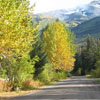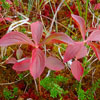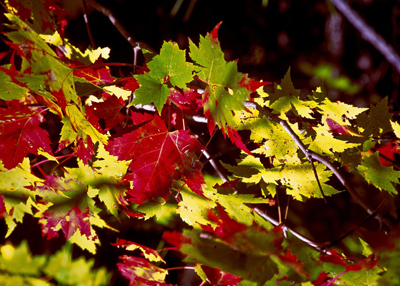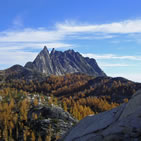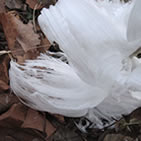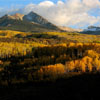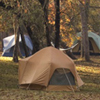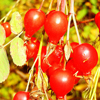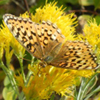Stories Archive
Fall colors on Alaska’s national forests offer beautiful vistas
Ever think about fall colors in Alaska? Now’s the time with autumn foliage colors peaking from late August to early October in Alaska’s Tongass and Chugach National Forests. However, since the national forests are in the temperate part of Alaska and are dominated by coniferous trees, the colors are generally not as spectacular as the brilliant colors of interior Alaskan trees and shrubs.
Kids and kids at heart can enjoy making and sharing a digital leaf press
This time of year brings back fond childhood memories. Fall’s increasing chill and leaf-covered ground take me back to elementary school, where nature and the changing seasons served as learning material. A favorite lesson I learned was how to create a book of pressed leaves.
Share the joy of a botanist’s annual pilgrimage to the Darlingtonia Fens of the eastern Klamath Mountains
I dreaded October as a child. Growing up on the Oregon coast, October promised rain and more rain—rain on my birthday, rain on Halloween, rainy rain rain.
What a difference 300 miles and the rain shadow of a mountain range makes! October here in far northern California on the Shasta-Trinity National Forest brings me nothing but pleasure.
Forest Service wants you to get in where you fit in!
Every fall, nature puts on a dazzling show across America’s great outdoors for all of us to see. Whether you’re an adventurist or someone who just likes a good road trip, national forests are the places to be this time of year.
Fall colors the muskeg on Alaska’s Tongass National Forest
Muskegs, a colloquial term for peat bogs, blanket 10 percent of the Tongass National Forest. These wetlands range in size from a few square feet to many acres. Over the ages, muskegs formed as Sphagnum mosses, rushes and sedges grew and built up spongy carpets in these very wet, almost treeless areas.
Maple syrup flow threatened
Forest Service research indicates that climate change will affect habitat suitability for maple trees, threatening the multimillion dollar maple syrup industry.
Can a conifer offer fall color? Consider the Alpine larch in the northern Rocky Mountains
Do you think that all evergreen conifers are always evergreen? In general, that’s true but the forested landscapes of the northern Rocky Mountains offer an amazing colorful exception to this each fall with the spectacular shows of the Alpine larch (Larix lyallii).
Fall wildflowers are part of the fall colors parade in the east and south-central United States
Fall is a wonderful time to find an amazing array of wildflowers on your national forests and grasslands. But before you venture out, take a moment for a sneak preview on the U.S. Forest Service’s Fall Colors 2014 web site for a few ideas to plan your visit.
Fall colors usher in autumn in the Rocky Mountains
In Colorado, fall arrives in different ways and at different times around the state. It generally starts in the high country during August, where green alpine tundra begins to show reds, yellows and browns; colors which persist through the first snow storms of mid-September.
Scenic drives on North Carolina’s national forests show off fall foliage
As the days turn cooler, the perennial treat of fall’s panorama of spectacular colors offers many opportunities to enjoy the pageantry on the Nantahala and Pisgah National Forests in North Carolina.
Look to Idaho’s Ponderosa Pine Scenic Byway for Fall Color Vistas
One of the first excursions Idaho locals recommend to newcomers is the Ponderosa Pine Scenic Byway along Highway 21 from Boise to Stanley, Idaho. The popular route traverses foothills, high-elevation forests and scenic river canyons in the heart of the Boise National Forest and Sawtooth National Recreation Area.
Change in seasons brings fall color to Boise National Forest
Sometime after Labor Day when the kids go back to school, I begin to notice subtle signs of fall. This can be a welcome relief after a particularly hot summer with temperatures reaching north of 100 degrees. But the days are getting markedly shorter and I miss the lazy summer evenings spent outdoors, listening to the sounds of nature.



